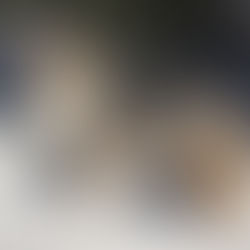Puppy Proofing your House!

Puppies can be destructive, fun-loving critters. Just accept that if an object is within a puppy’s reach, it will potentially be chewed up. Puppies have a very deep urge to chew on anything and everything. So make the decision now that the puppy will not have free range of your house. Besides their crate, plan on her living temporarily in an enclosed section of your house with a mop-able floor that can be puppy-proofed. The best thing I have found is a puppy playpen about the size of a child’s playpen and I prefer wire to wood or plastic.
Puppies love to chew electrical wires, eat inedible foams, cardboard and plastic, leather and cloth items. Most of these items amazingly pass through the puppy without more than some colic and possible diarrhea. Crayons are a favorite at my house and I’ve found my fair share of colorful poop.
Keep plenty of chew sticks and latex toys thrown about and available for the puppy. When you catch your puppy chewing on the "wrong" something, you should immediately distract her with a chew toy. Please note that children’s toys make exceptionally poor and dangerous puppy toys.
There will be a lot of backsliding because a puppy’s urge to chew is so great. Don’t criticize the puppy. Try to clear non-chewable items from her environment instead. When items cannot be removed (such as doors, etc.) you can spray them with apple bitter mist available from a pet supply store. It is a combination of essence of bitter apple, cayenne pepper, and a product I have never identified but which tastes like gasoline. Amazingly, some puppies will still chew objects drenched in this brew so prevention is the best option. Keep things up you don’t want chewed. Period.
Understand Teething
Around 4 to 5 months of age, puppies will start to get their permanent teeth. There are several things you can do, both to ease the pain and control the chewing:
Make some chicken soup (low sodium) ice cubes and give them to the puppy.
Soak a clean rag in water, wring it out and then freeze it (rolling it up helps) and give it to your puppy to chew on.
Soften kibble a bit with water.
Puppies lose their teeth in a distinct pattern:
Small front teeth
Premolars just behind the canines
Molars in the back (You’ll see adult molars behind those erupting.)
Canine teeth (Sometimes the adult canines erupt before the baby canines have come all the way out.)

*This picture shows how an adult tooth comes in right next to a baby tooth. A week or so later, it will be gone.
During this time, some discomfort, including bleeding gums is to be expected. Your puppy will want to chew more during this period of time, but it may also be too painful to do so (hence the suggestions above). You will probably find few if any of the teeth your puppy loses, as puppies typically swallow them. It's OK, it all seems to work out in the end...
Happy tails!




























































